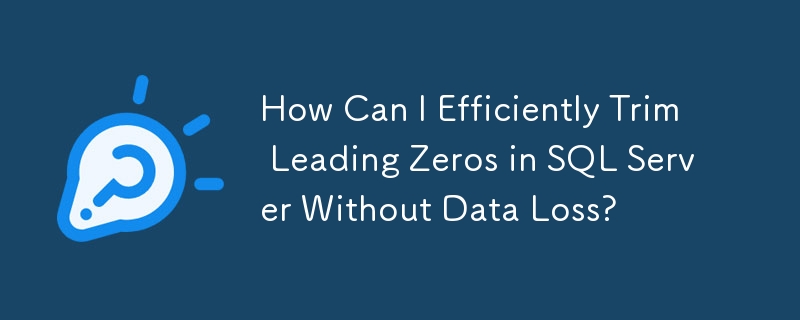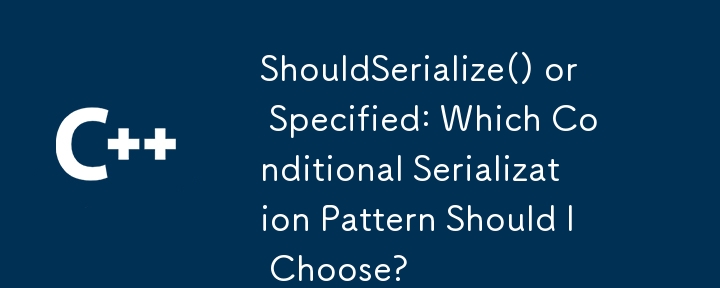Found a total of 10000 related content
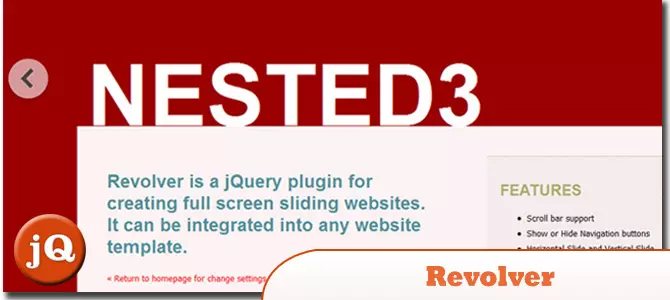
12 jQuery Fullscreen Plugins
Article Introduction:12 amazing jQuery full screen plug-ins to create a fascinating website!
Sometimes, full-screen websites are really cool! If a website looks plain, how long do you think visitors will stay? So, we have prepared some good stuff to help you: 12 jQuery full-screen plugins that give your website a stunning full-screen responsive effect! These plugins will add extraordinary visuals to your website. Ready?
Related recommendations:
100 jQuery picture/content slider plug-ins
30 jQuery responsive layout plug-ins
Revolver
A jQuery plugin for creating full-screen sliding websites. It can be integrated into any website template.
Source code
2025-02-25
comment 0
572

How to Replace jQuery Class Toggling with Pure JavaScript?
Article Introduction:Pure JavaScript Alternative for jQuery Class TogglingProblem:Converting a jQuery code that toggles class names for a responsive menu to pure JavaScript.Solution:Option 1:Utilize the classList.toggle() method, which is supported by most modern browser
2024-10-21
comment 0
1239

Meet Polypane, a Browser That Makes You Five Times Faster
Article Introduction:Polypane: A multi-screen browser specially designed for efficient web development
Core advantages:
Multi-screen synchronous view: Polypane subverts tradition and uses multi-screen views to simultaneously show the website's effect under different screen sizes, significantly improving the efficiency of responsive design.
Integrated development tools: Built-in powerful development tools, including real-time reloading, CSS debugging, barrier-free testing, full-screen screenshots, device simulation, etc., simplifying the development process and improving productivity.
Significantly improve efficiency: Research shows that developers using Polypane are 3 to 10 times more efficient, and significantly reduce the workload of bug fixes after going online.
As developers, we pursue efficient tools. We carefully select keyboards and code editors
2025-02-14
comment 0
1130
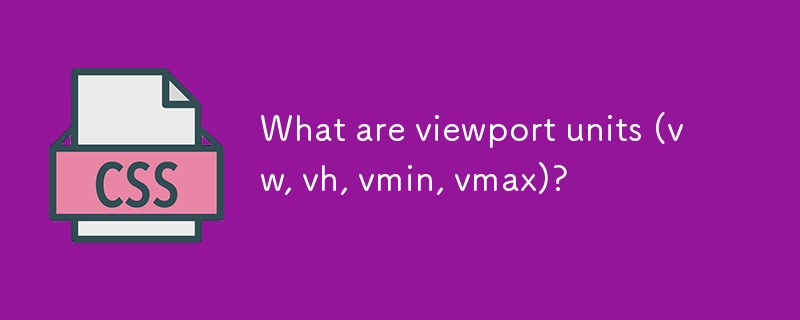
What are viewport units (vw, vh, vmin, vmax)?
Article Introduction:Viewport units are relative units based on browser viewport size in CSS, used to create responsive layouts. 1. vw and vh represent 1% of the viewport width and height respectively. For example, 10vw is 10% of the width and 20vh is 20% of the height, which is suitable for full-screen display or fixed proportional elements; 2. vmin and vmax are calculated based on the smaller or larger edges of the viewport. For example, vmin equals vh and vmax equals vw in landscape screen, which is suitable for adapting to different screen directions; 3. Usage techniques include setting responsive fonts with vw (with media query limit range) and 100vh to implement full-screen blocks, but it is necessary to note that the mobile address bar affects the visual area, which can be solved by 100dvh or JavaScript.
2025-07-11
comment 0
742

How to Build a Simple jQuery Slider
Article Introduction:This article will guide you to create a simple picture carousel using the jQuery library. We will use the bxSlider library, which is built on jQuery and provides many configuration options to set up the carousel.
Nowadays, picture carousel has become a must-have feature on the website - one picture is better than a thousand words!
After deciding to use the picture carousel, the next question is how to create it. First, you need to collect high-quality, high-resolution pictures.
Next, you need to create a picture carousel using HTML and some JavaScript code. There are many libraries on the web that can help you create carousels in different ways. We will use the open source bxSlider library.
The bxSlider library supports responsive design, so the carousel built with this library can be adapted to any
2025-03-11
comment 0
903

jQuery Get Current Page Title
Article Introduction:Gets the jQuery code snippet of the current web page title and store the title into a variable for use with other scripts. This title is displayed in the browser title bar.
Use jQuery to get the full title of the current webpage and store it in a variable for code snippets to work with other scripts:
jQuery(document).ready(function() {
// Use jQuery
var href = jQuery(location).attr('href');
jQuery('#this_title').html('>' href
2025-03-05
comment 0
1186

How to solve the h5 compatibility problem
Article Introduction:Solutions to H5 compatibility issues include: using responsive design that allows web pages to adjust layouts according to screen size. Use cross-browser testing tools to test compatibility before release. Use Polyfill to provide support for new APIs for older browsers. Follow web standards and use effective code and best practices. Use CSS preprocessors to simplify CSS code and improve readability. Optimize images, reduce web page size and speed up loading. Enable HTTPS to ensure the security of the website.
2025-04-06
comment 0
402
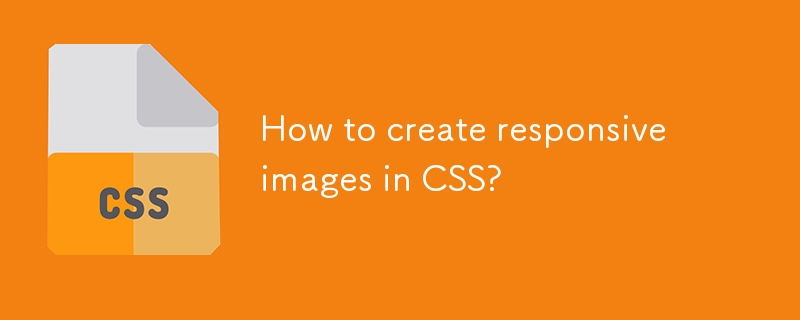
How to create responsive images in CSS?
Article Introduction:The core of the implementation of responsive images is to use HTML's srcset and sizes attributes to match CSS styles. 1. Use srcset to specify multiple pictures of different sizes and mark their widths (such as 480w, 800w, 1200w), so that the browser can automatically select the most suitable picture according to the viewport width; 2. Define the display ratio of the picture under different screen sizes through sizes, for example, "(max-width:600px)100vw" means that the small screen occupies the full viewport, otherwise it will occupy half of the width; 3. Set img{max-width:100%;height:auto;} in CSS to ensure that the picture is adaptable to the container and maintain the proportion; 4. Optionally, in srcset
2025-06-28
comment 0
715

The Ultimate Guide to Responsive Web Design
Article Introduction:Create a fluid grid using relative units (such as percentages, em, rem) to ensure that the layout is flexibly adjusted with the screen size; 2. Use max-width:100% and srcset attributes to adapt the images to different devices to avoid overflow and optimize loading; 3. Adopt mobile-first media query strategy, start with the minimum screen, and set breakpoints according to content needs; 4. Ensure touch screen friendly, button size is not less than 44–48px, avoid hover interaction, increase spacing and font size; 5. Optimize performance, compress images, use modern formats (such as WebP), delay loading of non-first screen images, and streamlined code; 6. Multi-device testing, use developer tools, real devices and cross-browser platforms to verify response effects and accessibility; Responsive design
2025-07-27
comment 0
724

jQuery Change Current Page Title
Article Introduction:Although jQuery itself cannot directly modify web page titles, the same effect can be easily achieved using pure JavaScript. The following JavaScript code snippet can modify the full title of the current web page (i.e. the title displayed in the browser title bar):
document.title = 'New title';
FAQs about modifying page titles using jQuery (FAQs)
How to modify the title of a specific page using jQuery?
To modify the title of a specific page using jQuery, use the document.title property. This property allows you to get or set text in the title bar. Here is a simple example:
$(document).re
2025-03-04
comment 0
580
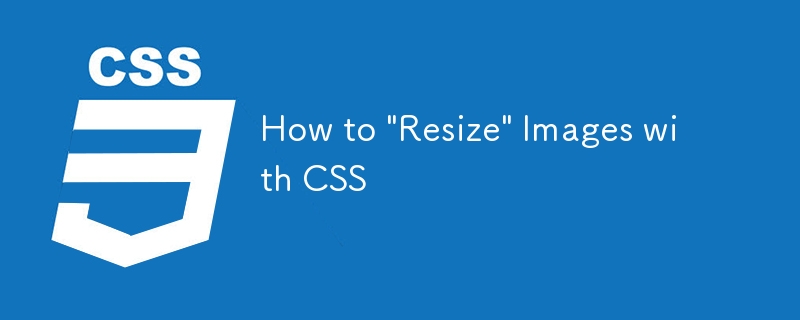
How to 'Resize' Images with CSS
Article Introduction:While CSS3 can't "resize" images directly, you can use media queries and responsive design principles to make images look resized in the browser.
The idea is to make the image responsive to the viewport size, ensuring that the image does not exceed the edge. If the viewport height is greater than the width, the maximum width must be defined; if the viewport width is greater than the height, the maximum height must be defined.
Here are some sample code and links to more related articles. Please note the use of img.ri:empty, which is a structural pseudo-class that only matches elements without child elements (the image should not have any child elements). This is a CSS3 selector, so IE8 and below will not be able to resolve the declaration.
@media screen a
2025-02-26
comment 0
1203

How to embed a video in HTML?
Article Introduction:There are two main methods for embedding videos in web development. 1. Use HTML5 tags to directly embed local or remote video files, support controls, autoplay, loop, muted and other attributes, and can provide various formats such as MP4 and WebM through tags. 2. When embedding YouTube or Vimeo videos, you can directly copy the iframe code provided by the platform and adjust parameters such as video ID, size and full screen functions. In addition, it is recommended to use CSS to implement responsive design, and ensure that the video is displayed adaptively on different devices by setting the .video-container container and its internal element styles, while paying attention to compatibility, automatic playback strategy and mobile adaptation issues.
2025-07-13
comment 0
352

What is a single page application SPA
Article Introduction:The SPA can change content without refreshing the page because it uses JavaScript to dynamically update the local content of the page, and implements it with the help of front-end framework and asynchronous loading technology. Its core mechanisms include: ① Request data from the server through AJAX or FetchAPI; ② Use front-end routes to manage URL changes; ③ Replace part of the content instead of full page overloading in existing pages. This mode is suitable for scenes such as backend management systems, social network interfaces, online editing tools, etc. that require frequent interaction, but attention should be paid to SEO optimization, home screen loading speed, memory management and browser compatibility. During development, it is recommended to use code chunking, evaluate whether SSR or static generation is introduced, and continuously monitor performance to ensure user experience and application stability.
2025-06-26
comment 0
1051


Dave The Diver: How To Catch Spider Crabs
Article Introduction:In Dave The Diver, there are some creatures that are not easy to catch. Or, catch alive that is. The spider crab is one of those very species, making it seem like the only way to bring these crustaceans back up to land is to viciously crack them up w
2025-01-10
comment 0
835

Prepare for Interview Like a Pro with Interview Questions CLI
Article Introduction:Prepare for Interview Like a Pro with Interview Questions CLI
What is the Interview Questions CLI?
The Interview Questions CLI is a command-line tool designed for JavaScript learners and developers who want to enhance their interview
2025-01-10
comment 0
1464

















